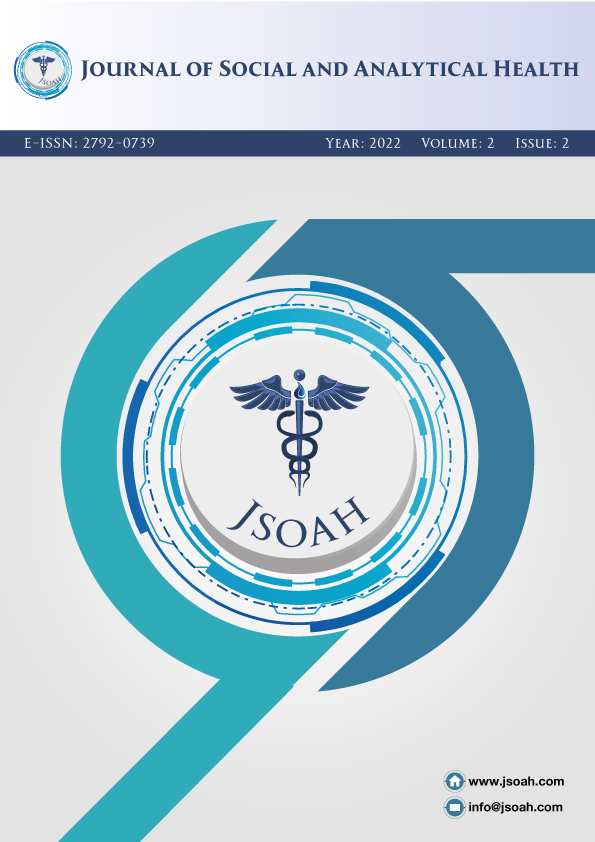Cytokine gene expression in ligamentum flavum hypertrophy
DOI:
https://doi.org/10.5281/zenodo.6768965Keywords:
Lumbar Spinal Canal Stenosis, Ligamentum Flavum Hypertrophy, Spinal Stenosis, Cytokine, FibrosisAbstract
Aim: Lumbar spinal canal stenosis is a disease is an important reason of injury in the elderly and the most important reason of spinal surgery in patients above the age of 65. Ligamentum flavum hypertrophy plays a critical role in the pathogenesis of lumbar spinal canal stenosis. Inflammatory agents induce the ligamentum flavum hypertrophy and increased scar tissue formation. Even though its prevalence, lumbar spinal stenos does not have a universal definition in this day and age and its generally accepted radiologic diagnosis criteria is lacking.
Material and Methods: In our study, 25 samples of hypertrophied LF tissue were obtained from the patients with the diagnosis of lumbar spinal canal stenosis while 25 samples were obtained from the patients who underwent surgery for lumbar disc herniation forming control group. Samples were investigated for histological study. Lumbar spinal canal stenosis and control groups were investigated for the expression of inflammatory cytokine genes by semiquantitative RT-PCR method.
Results: Cytokines were found both in lumbar spinal canal stenosis and control groups. Any statistically significant difference was not found between lumbar spinal canal stenosis and control groups in terms of some cytokines. However, low levels of IL-1 beta were found in lumbar spinal canal stenosis group.
Conclusions: Spinal canal stenosis is the most important reason of pain and decrease in functional capacity in elderly patients. Therefore, effective therapeutic strategies are needed. Drug resistance is common in fibrotic tissue. Antifibrotic drugs can be an important part of a targeted drug development strategy.
References
Genevay S, Atlas SJ. Lumbar spinal stenosis. Best Pract Res Clin Rheumatol. 2010;24(2):253–265.
Lee BH, Moon S-H, Suk K-S, Kim H-S, Yang J-H, Lee H-M. Lumbar Spinal Stenosis: Pathophysiology and Treatment Principle: A Narrative Review. Asian Spine J. 2020;14(5):682–693.
Yabe Y, Hagiwara Y, Ando A, Tsuchiya M, Minowa T, Takemura T, et al. Chondrogenic and fibrotic process in the ligamentum flavum of patients with lumbar spinal canal stenosis. Spine (Phila Pa 1976). 2015;40(7):429–435.
Nakamura T, Okada T, Endo M, Nakamura T, Oike Y, Mizuta H. Angiopoietin-like protein 2 promotes inflammatory conditions in the ligamentum flavum in the pathogenesis of lumbar spinal canal stenosis by activating interleukin-6 expression. Eur Spine J. 2015;24(9):2001–2009.
Hu W, Kan S, Liu G, Cao Z, Zhu R. The expression of P16 and S100 associated with elastin degradation and fibrosis of the Ligamentum Flavum hypertrophy. BMC Musculoskelet Disord. 2019;20(1):458.
Kany S, Vollrath JT, Relja B. Cytokines in Inflammatory Disease. Int J Mol Sci. 2019;20(23):6008.
Ramani T, Auletta CS, Weinstock D, Mounho-Zamora B, Ryan PC, Salcedo TW, Bannish G. Cytokines: The Good, the Bad, and the Deadly. Int J Toxicol. 2015;34(4):355-365.
Kosaka H, Sairyo K, Biyani A, Leaman D, Yeasting R, Higashino K, et al. Pathomechanism of loss of elasticity and hypertrophy of lumbar ligamentum flavum in elderly patients with lumbar spinal canal stenosis. Spine (Phila Pa 1976). 2007;32(25):2805–2811.
Ruiz-Fernández C, Francisco V, Pino J, Mera A, González-Gay MA, Gómez R, et al. Molecular Relationships among Obesity, Inflammation and Intervertebral Disc Degeneration: Are Adipokines the Common Link? Int J Mol Sci. 2019;20(8):2030.
Munns JJ, Lee JYB, Espinoza Orías AA, Takatori R, Andersson GBJ, An HS, et al. Ligamentum flavum hypertrophy in asymptomatic and chronic low back pain subjects. PLoS One. 2015;10(5):e0128321.
Cheung PWH, Tam V, Leung VYL, Samartzis D, Cheung KM-C, Luk KD-K, et al. The paradoxical relationship between ligamentum flavum hypertrophy and developmental lumbar spinal stenosis. Scoliosis Spinal Disord [Internet]. 2016;11(1):26.
Karabekir HS, Yildizhan A, Atar EK, Yaycioglu S, Gocmen-Mas N, Yazici C. Effect of ligamenta flava hypertrophy on lumbar disc herniation with contralateral symptoms and signs: a clinical and morphometric study. Arch Med Sci. 2010;6(4):617–622.
Zhong Z-M, Zha D-S, Xiao W-D, Wu S-H, Wu Q, Zhang Y, et al. Hypertrophy of ligamentum flavum in lumbar spine stenosis associated with the increased expression of connective tissue growth factor. J Orthop Res. 2011;29(10):1592–1597.
Nakatani T, Marui T, Hitora T, Doita M, Nishida K, Kurosaka M. Mechanical stretching force promotes collagen synthesis by cultured cells from human ligamentum flavum via transforming growth factor-beta1. J Orthop Res Off Publ Orthop Res Soc. 2002;20(6):1380–1386.
Axel W, Peter W, Michael K. Interleukin-1β (IL-1β) Processing Pathway. Sci Signal. 2010 Jan 19;3(105):cm2.
Lopez-Castejon G, Brough D. Understanding the mechanism of IL-1β secretion. Cytokine Growth Factor Rev. 2011;22(4):189–195.
Wang Y, Che M, Xin J, Zheng Z, Li J, Zhang S. The role of IL-1β and TNF-α in intervertebral disc degeneration. Biomed Pharmacother. 2020;131:110660.
Maher C, Underwood M, Buchbinder R. Non-specific low back pain. Lancet. 2017;389(10070):736–747.
Kadow T, Sowa G, Vo N, Kang JD. Molecular basis of intervertebral disc degeneration and herniations: what are the important translational questions? Clin Orthop Relat Res. 2015;473(6):1903–1912.
Kim B-J, Hur JW, Park JS, Kim JH, Kwon T-H, Park Y-K, et al. Expression of matrix metalloproteinase-2 and -9 in human ligamentum flavum cells treated with tumor necrosis factor-α and interleukin-1β. J Neurosurg Spine. 2016;24(3):428–435.
Wang B, Gao C, Zhang P, Sun W, Zhang J, Gao J. The increased motion of lumbar induces ligamentum flavum hypertrophy in a rat model. BMC Musculoskelet Disord. 2021;22(1):334.
Chao Y-H, Yang H-S, Sun M-G, Sun J-S, Chen M-H. Elastin-derived peptides induce inflammatory responses through the activation of NF-κB in human ligamentum flavum cells. Connect Tissue Res. 2012;53(5):407–414.
Downloads
Published
How to Cite
Issue
Section
License
Copyright (c) 2022 Journal of Social and Analytical Health

This work is licensed under a Creative Commons Attribution-NonCommercial 4.0 International License.


